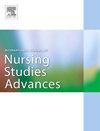Family caregivers' needs at 6 months after pancreatic cancer surgery: A latent profile analysis
IF 3.1
Q1 NURSING
International Journal of Nursing Studies Advances
Pub Date : 2025-09-01
DOI:10.1016/j.ijnsa.2025.100416
引用次数: 0
Abstract
Background
Family caregivers ('carers') bear the highest care burden during the postoperative survivorship period of pancreatic cancer, given its poor prognosis. Most carers report unmet needs when taking on caregiving responsibilities during this period. Thoroughly investigating carers' needs is essential for helping families address practical care challenges. However, this important topic remains underexplored.
Objective
To assess the need levels and identify need subgroups among carers of patients with pancreatic cancer 6 months after surgery and demographic predictors contributing to heterogeneity.
Design
Cross-sectional study.
Setting(s)
Participants were recruited from the pancreas centres of four tertiary A-level comprehensive hospitals in Jiangsu Province, China.
Participants
240 patients with pancreatic cancer and their carers ('dyads') participated in the survey.
Methods
Carers completed the Comprehensive Needs Assessment Tool in Cancer for Carers, the Activities of Daily Living Scale for patients, and the General Demographic Information Questionnaire for dyads. Latent profile analysis (LPA) was used to categorise carers' needs. Non-parametric and chi-square tests were used to examine differences in need scores and sociodemographic characteristics among subgroups. Multiple logistic regression (MLR) was used to analyse sociodemographic impacts.
Results
Six months post-surgery, the total carers' need score was 41.83 ± 22.65 points, indicating a moderate level, with the highest needs reported for healthcare personnel, information and knowledge, and facilities and services. The LPA results revealed that carers were divided into five distinct subgroups based on differing levels of need across the domains assessed by the Comprehensive Needs Assessment Tool in Cancer for Carers, with proportions of 8.8 %, 22.5 %, 8.3 %, 55 %, and 5.4 %. Subgroup membership was predicted by four factors: carers' sex (odds ratio [OR]: 11.08, 95 % confidence interval [CI]: 1.64, 74.99, p = 0.01), carers' education levels (OR: 3.92, 95 % CI: 1.04, 14.72, p = 0.04), patients' treatment after surgery (OR: 0.10, 95 % CI: 0.01, 0.84, p = 0.04) and activities of daily living levels (OR: 14.63, 95 % CI: 1.97, 108.77, p < 0.01).
Conclusions
We have highlighted the complex individualised needs of carers of patients with pancreatic cancer. Through LPA and MLR, we identified distinct need subgroups and their predictors. Healthcare professionals may be able to improve dyads’ health by tailoring support to each subgroup’s specific needs and issues.
Registration
Registration number: ChiCTR2400079415, registered 03/01/2024, first recruitment 04/02/2024.
胰腺癌手术后6个月家庭照顾者的需求:一项潜在特征分析
背景:由于胰腺癌预后不良,在其术后生存期,家庭照顾者(“照顾者”)承担着最高的照顾负担。大多数护理人员报告说,在这一时期承担照顾责任时,需求未得到满足。彻底调查护理人员的需求对于帮助家庭应对实际护理挑战至关重要。然而,这一重要话题仍未得到充分探讨。目的评估胰腺癌患者术后6个月护理人员的需求水平,确定需求亚组,以及导致异质性的人口统计学预测因素。DesignCross-sectional研究。参与者从中国江苏省四所三级甲等综合医院的胰腺中心招募。参与者:240名胰腺癌患者及其护理人员(“二人组”)参与了这项调查。方法护理人员完成《癌症护理人员综合需求评估工具》、《患者日常生活活动量表》和《一般人口统计信息问卷》。使用潜在特征分析(LPA)对照顾者需求进行分类。采用非参数检验和卡方检验检验亚组间需求得分和社会人口学特征的差异。采用多元逻辑回归(MLR)分析社会人口统计学影响。结果术后6个月护理人员需求总分为41.83±22.65分,处于中等水平,其中护理人员需求、信息知识需求和设施服务需求最高。LPA结果显示,根据护理人员癌症综合需求评估工具评估的不同领域需求水平,护理人员被分为五个不同的亚组,比例分别为8.8%,22.5%,8.3%,55%和5.4%。亚组成员由四个因素预测:护理者性别(比值比[OR]: 11.08, 95%可信区间[CI]: 1.64, 74.99, p = 0.01),护理者教育水平(OR: 3.92, 95% CI: 1.04, 14.72, p = 0.04),患者术后治疗(OR: 0.10, 95% CI: 0.01, 0.84, p = 0.04)和日常生活活动水平(OR: 14.63, 95% CI: 1.97, 108.77, p < 0.01)。结论我们强调了胰腺癌患者护理人员复杂的个性化需求。通过LPA和MLR,我们确定了不同的需求亚群及其预测因子。医疗保健专业人员可以根据每个子群体的具体需求和问题定制支持,从而改善二人组的健康状况。报名编号:ChiCTR2400079415, 2024年3月1日报名,2024年2月4日首次招聘。
本文章由计算机程序翻译,如有差异,请以英文原文为准。
求助全文
约1分钟内获得全文
求助全文
来源期刊

International Journal of Nursing Studies Advances
Nursing-General Nursing
CiteScore
5.80
自引率
0.00%
发文量
45
审稿时长
81 days
 求助内容:
求助内容: 应助结果提醒方式:
应助结果提醒方式:


